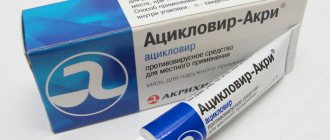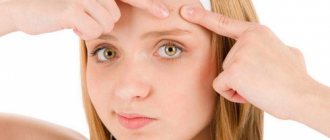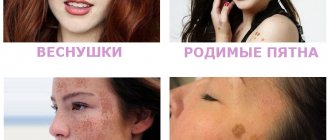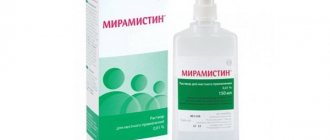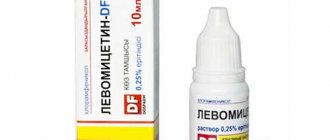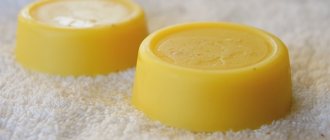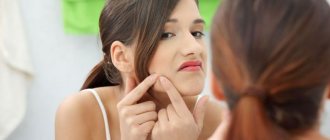06/27/2017 Olga Migunova 3 comments
The face is not only the most exposed part of the body, but also a common location for acne, which can leave post-acne spots - spots, dimples or scars.
The most prone to acne are teenagers who have a lot of complexes about it, because at this age much attention is paid to appearance.
Considering the above, we suggest looking at how to quickly get rid of acne on the face and whether this can be done at home, and, most importantly, without harm to health. We will especially pay attention to how to get rid of acne on the face of a teenager, since this issue is very relevant today. You can also watch a video on this topic.
But first, let’s look at the different types of acne and what causes their appearance.
Acne on the face: main causes
Many people believe that the problem of acne only affects teenagers during puberty. But this is a misconception. Acne is one of the top 10 most common skin diseases in the world. Since 1970, the number of people suffering from this disease has increased by 25%, and many of them are already well over 20!
Pimples or acne are the result of improper functioning of the sebaceous gland. Ideal conditions for the appearance of inflammation are a disruption in the process of secreting oily secretions, as well as blockage of the sebaceous gland with dust and cosmetics.
Before we understand how to get rid of acne, let's study the enemy in person and understand the factors that influence the appearance of inflammation.
Additional measures to help tablets
Without following a diet, you can significantly neutralize the effect of taking pills. Therefore, it is extremely necessary to give up fatty, spicy foods and alcohol . The tablets can be helped by means for topical use.
Topical antimicrobial drugs (azelaic acid, benzoyl peroxide, clindamycin) and retinoids (adapalene, tretinoin), as well as masks made from brewer's yeast, contribute to the superficial destruction of bacteria, and the only side effects observed are dryness and minor skin irritation.
A clean face is sometimes the result of hard work
Using such products is less productive than treating acne on the face from the inside. It is unknown what pills the specialist will prescribe, but any of the above drugs will certainly enhance the overall therapeutic effect and shorten the duration of therapy.
Thus, treating rashes from the inside actually provides a positive result in the shortest possible period of time , and this approach should be used when it is established that local treatment is ineffective.
Based on the recommendations of professionals and the intensity of the rash when choosing the necessary tablets. Don't treat a few small pimples with retinoids, or try to treat a large rash with brewer's yeast or colon cleanses.
Causes of acne and the most effective remedy for acne. Find out from this useful video:
Which remedies will never get rid of acne and which ones will really help. Watch the video review:
Review of the use of the drug "Jess" for the treatment of acne. Watch an interesting video:
Why do acne appear?
The causes of acne on skin areas can be divided into 2 types. There are internal (endogenous) and external (exogenous) factors.
Endogenous factors:
- Stress.
During times of stress, the hormone cortisol is produced in large quantities. When its level is constantly at a high enough level, our sebaceous glands become very active, which leads to the appearance of pimples. - Hormonal imbalance.
A woman’s body produces not only female sex hormones, but also male ones, which are called androgens. Sebaceous glands are sensitive to male hormones. If the body begins to produce a large amount of them, this stimulates a surge in sebum. - Diseases of the gastrointestinal tract.
If the intestines do not work properly, then pathogenic bacteria begin to release toxins into the body, which affects the condition of the skin. This also includes all the food garbage that we eat.
Exogenous factors:
Sun rays.
Exposure to the sun for a long time without protection has a negative effect on the skin. The sun's rays dry it out. In this case, it begins to secrete even more sebum in order to maintain its protective functions. And this is a direct path to inflammation.
Improper skin care.
The skin does not like excesses in care, therefore:
- Do not use nourishing creams that are too greasy.
They clog pores and cause acne. It is better to choose skincare products labeled “non-comedogenic” or “water-based.” - Don't forget about hydration.
Products for problem skin usually dry it out very much. If there is not enough hydration, the sebaceous gland works more actively, which means the risk of inflammation on the face increases.Skin requires regular care! You can learn more about this in our article on daily skin care.
- Choose suitable decorative cosmetics.
When choosing cosmetics, it is important to pay attention to the following properties: non-greasy, non-comedogenic, hypoallergenic, and non-irritating. Look for an ingredient called dimethicone. It helps hide redness and smoothes out skin unevenness. You can find the right care in the natural cosmetics store Beauty365
Treatment: drugs
Getting rid of acne is a labor-intensive process and practically cannot be done without the use of special medications. Since inflammation occurs against the background of infection, tablets and external agents are aimed at eliminating it. These include antibacterial and natural medicines.
Antibiotics
Antibiotics for facial acne are prescribed in severe cases of the disease, when other medications do not give the desired result. Despite the high effectiveness of antibacterial drugs, such therapy can provoke a disruption of the intestinal microflora. Therefore, they must be taken with caution; an acne treatment regimen drawn up by a doctor is required.
These medications are available for local use (gels, ointments, creams) and internal effects on the source of infection.
Antibiotics for external use
Erythromycin is an ointment characterized by a wide spectrum of action that affects the synthesis of proteins of pathogenic microorganisms, thereby preventing their reproduction.
- resolves pus inside pimples, reduces inflammation and redness, positive dynamics are observed on the fifth day;
- has a long-lasting effect; after completing the course, acne does not appear on the face for a long time;
- approved for use by people who have an allergic reaction to penicillin;
- Contraindications include age under ten years, liver and kidney pathologies.
Skinoren is available as a gel or cream that has an antibacterial, anti-inflammatory, softening effect.
- intended as a remedy for acne, increased pigmentation, seborrheic dermatitis, rosacea;
- the active substance (azelaic acid) enters the deep layers of the dermis, providing healing properties;
- if you follow a long course, the effectiveness of the gel and ointment will be at the same level, and the result will last a long time;
- Not recommended for people with hypersensitive skin prone to irritation.
Differin is a gel that ensures proper metabolism in the skin and protects the epidermis from external negative influences.
- copes with minor acne, can overcome severe acne only in combination with other drugs;
- affects the production of sebum, reduces oiliness. Thanks to this effect, the pores become free, the number of inflammations is reduced;
- during therapy with this drug, it is not advisable to stay in the open sun for a long time and use products containing drying components (zinc, alcohol, salicylic acid, etc.);
- prohibited if you are allergic to the components of the medicine; apply with caution for seborrhea and dermatitis.
Antibiotics for internal use
Josamycin is a drug that can prevent protein synthesis in bacterial organisms, thereby destroying their activity.
- fights almost all pathogens that cause acne;
- take two tablets a day for a month. To maintain the result, continue to take one tablet for another eight weeks;
- It is better not to combine this medicine simultaneously with contraceptives, as it may reduce the effect of the latter;
- approved for use in children over 14 years of age, not recommended if there are chronic liver problems and during breastfeeding.
Azithromycin is a medicine aimed at destroying a large number of harmful microorganisms that cause inflammation and acne.
- prescribed for many infectious diseases, capable of destroying most pathogens;
- an effective remedy for facial acne, erysipelas, dermatitis;
- A convenient course of treatment is three days. Take one tablet a day;
- It is prohibited for people suffering from serious kidney damage, children under twelve years of age and nursing women.
Doxycyline is an antibiotic that stops the spread of bacteria by disrupting their synthesis.
- eliminates rashes and inflammation in a short time, having a detrimental effect on anaerobic and aerobic microorganisms;
- is able to get rid of infections that have arisen in different parts of the body;
- treatment of acne on the face requires a twelve-week course;
- should not be used by people with anemia, fungal diseases, or circulatory problems.
Most often, treatment of facial acne with antibiotics is recommended for patients whose rashes are chronic. These drugs can eliminate the exacerbation, but without proper care and compliance with preventive measures, the effect will be temporary.
Homeopathy treatment
Another common option for treating acne on the face is homeopathy therapy. It takes place in two stages. First, symptomatic signs are removed by taking low-concentrated medications. Then the specialist individually selects a medication that can activate the body’s defense systems and permanently overcome the troubling problem. These include:
Belladonna Plus is a medicine that affects the human central nervous system and also has a powerful anti-inflammatory effect.
- helps cope with red rashes on the cheekbones and cheeks, cure mild seborrhea;
- combined with other drugs, therefore often prescribed in combination;
- has no side effects, but during pregnancy and breastfeeding it is better to refrain from using it;
- The recommended dosage is one drop of extract per 30 milliliters of liquid.
Pulsatilla is a homeopathic remedy based on the herb lumbago.
- gives an effect if the culprit of acne is the abuse of sweet and fatty foods;
- stimulates the functioning of your own immune system;
- in high concentrations causes allergies in the form of a rash or disruption of the digestive system;
- Suitable for light-eyed and fair-haired girls with pale skin.
Silicea is a solution of silicic acid. Release form: tincture or granules.
- copes well with inflammatory processes of various nature;
- not only fights acne, but also removes post-acne;
- for skin diseases, Silicea 30 is suitable;
- prohibited if you have chronic kidney disease.
Sulfur is a sulfur preparation.
- prescribed for extensive inflammation that is not amenable to other treatment methods;
- can be taken not only during an exacerbation, but also for prevention;
- high concentrations are dangerous, as they can cause allergies in the form of suppuration;
- Gepar Sulfur 6 is recommended for resolving purulent pimples.
Homeopathy can be an independent way to remove acne on the face, or be part of a comprehensive treatment. Many note the high effectiveness of this method, exceeding even the antibacterial effect.
Acne map on face
There is an opinion that the location of acne signals specific problems in the body.
Let's look at the main locations of acne:
- Forehead.
This area contains many sweat and sebaceous glands. This is why the skin there is often oily. If you have acne in the forehead area, then this indicates a disorder of the nervous system and digestive problems. - Nose.
Acne on the nose forces you to pay attention to the respiratory system and heart. - Cheeks.
Very often, acne appears on the cheeks. This is caused by consuming large amounts of sugar, which is found in many foods. - Chin.
A problem with the skin on the chin usually indicates a hormonal imbalance, which we discussed above. Pimples often appear there before menstruation.
Lead a healthy and active lifestyle.
In a healthy body healthy mind. And no acne . Metabolism is also perfectly adjusted with the right lifestyle. And this is not only nutrition, the absence of bad habits and stress - it is also sports. You don’t have to become a fitness fanatic, or go deep into the gym, radically changing your lifestyle... For starters, regular jogging in the fresh air, swimming, hiking, buy yourself a bike in the end is enough! Find friends with similar interests, sign up for your first yoga training and keep your word not to quit for at least the first six months.
At first it will be very difficult, but then you will get involved and over time you will not be able to imagine your life without sports. In addition, correct loads will also provide you with healthy sleep, increased performance, resistance to stress , immunity and the prevention of a bunch of unpleasant diseases.
Determining the severity of the disease
Easy degree.
In this case, there are no more than 10 pimples on the skin, and their size does not exceed 5 mm. There is a small rash on the body, blackheads and pimples can be noticed only by looking closely at the skin.
Average degree.
There are from 10 to 25 pimples on the skin. There are pustules on the body, they can usually be identified by the white-yellow liquid inside them.
Severe degree.
25 or more pimples, some painful. The hue is usually pinkish and the size exceeds 5 mm. Almost the entire face is affected.
Taking brewer's yeast
Brewer's yeast is a dietary supplement with a predominance of various components: zinc, iodine, calcium, succinic acid, vitamin C, magnesium, iron, potassium. Provide superficial treatment of acne on the face from the inside.
Brewer's yeast tablets
Whatever yeast tablets you find more suitable for your own body, they all improve the condition of the skin by fighting pathogenic microbes, normalizing the functioning of the sebaceous ducts and metabolic processes in skin cells.
Brewer's yeast is not able to cure severe forms of rashes
They only bring the skin into proper condition and are effective in combination with other treatment methods.
Preventive measures to combat acne
- Wash your face twice a day
Many people believe that washing your face more often will help prevent acne. Washing your face too often dries out your skin and causes inflammation. Therefore, to cleanse, it is enough to wash your face in the morning and evening. - Exfoliate your skin once a week.
This will help to promptly cleanse the skin of particles of dead epidermis, excess sebum and clogged pores, and therefore reduce the risk of acne. - Avoid touching your face with your hands, and wipe your phone screen with disinfectant wipes once a day.
There are a lot of bacteria on your hands and phone that cause rashes. The less your face comes into contact with them, the better for skin health. - Don't squeeze!
By squeezing a pimple, you injure nearby areas of the skin, which means you increase the area of inflammation.
How to squeeze it out?
First you need to decide whether you can squeeze a pimple. If you feel pain when pressing, you should not press, otherwise the inflammation will cover a large area, and the swelling and redness will not allow you to appear in public for a long time.
It is allowed to squeeze out only a ripe pimple, which with slight pressure literally flies out of the “nest”.
The procedure is carried out in the following sequence:
- Treat the inflamed area with alcohol or an antiseptic. Disinfect your hands with the same solution.
- Press your thumbs onto the pimple so that it is in the middle between the nail plates. Squeeze out the contents of the swelling, trying to release all the pus in one go. It is not recommended to touch healthy skin around the pimple.
- Treat the affected area with salicylic alcohol. On top, you can enhance the anti-inflammatory effect with Levomekol ointment. It also has healing properties. This will help the wound heal faster.
- 2 hours after the procedure, you need to apply a herbal lotion made from chamomile decoction on a cotton pad. You can also use celandine.
- The next morning, make the herbal lotion again. And any remaining redness can be masked with concealer and foundation.
It is not recommended to use cosmetics immediately after the procedure. The tissue of a fresh wound may become even more inflamed due to an allergic reaction to the components of the applied products. It is recommended to do herbal compresses periodically until the redness goes away. Rubbing with salicylic alcohol will help enhance the effect.
Review of the best anti-acne products
Sage hydrolate from Beauty365
Sage hydrolate is great for cleansing and toning problem skin. It tightens pores, regulates oiliness, relieves irritation, eliminates flaking and fights rashes. The hydrolate is completely natural and is produced by steam distillation of plant materials (sage) using water from a natural mountain spring.
Squalane from Beauty365
We have already talked about how important hydration is for problem skin. Squalane from beauty365 moisturizes the skin and is suitable for absolutely any skin, including oily and inflammation-prone skin. It consists of 100% natural plant squalane - sugar cane oil. Strengthens the skin and prevents moisture evaporation, normalizes the secretion of natural sebum. Makes it elastic and promotes skin regeneration.
Kinds
To deal with skin rashes, it is very important to identify their type. Depending on this, effective therapy is selected.
Today there are several types of acne:
- Comedones – they are also called blackheads. These formations are sebaceous plugs that clog pores.
- Acne vulgaris – they are often called acne vulgaris. They usually appear during adolescence and appear as red pimples with small pustules.
- Inflamed acne, boils and carbuncles are formed when an infection enters the skin. They are quite large in size and are accompanied by painful sensations.
When opened, a thick purulent secretion is released from these formations. Sometimes it contains bloody impurities. Such formations leave scars on the skin.
- Whiteheads - in medicine they are called milliums. Such formations resemble dark nodules, which often affect dry skin with small pores. Their appearance is caused by the accumulation of sweat and sebum.

